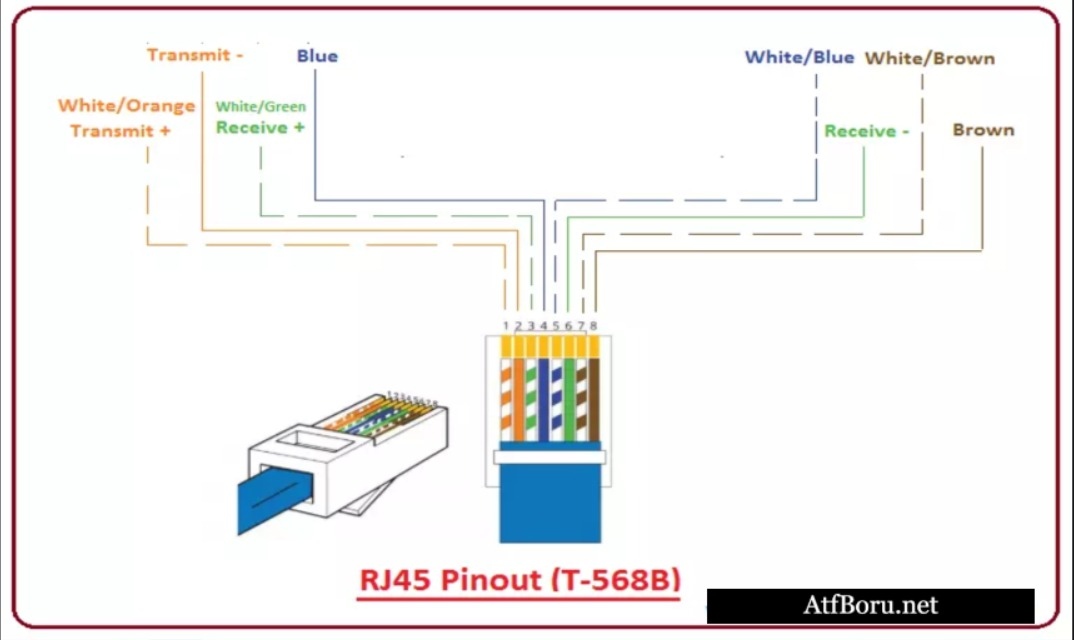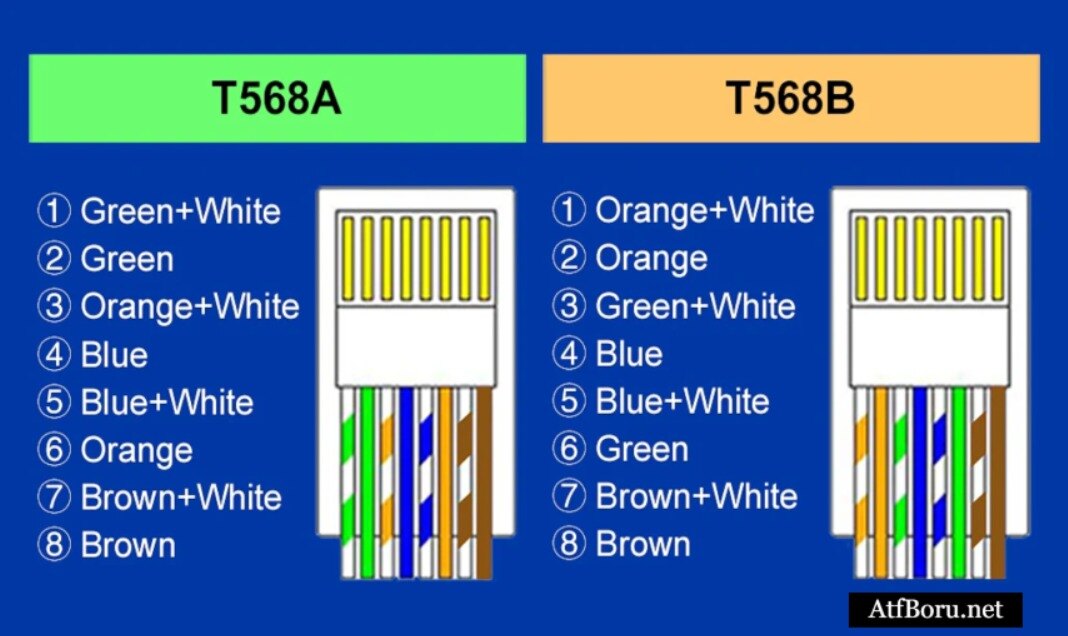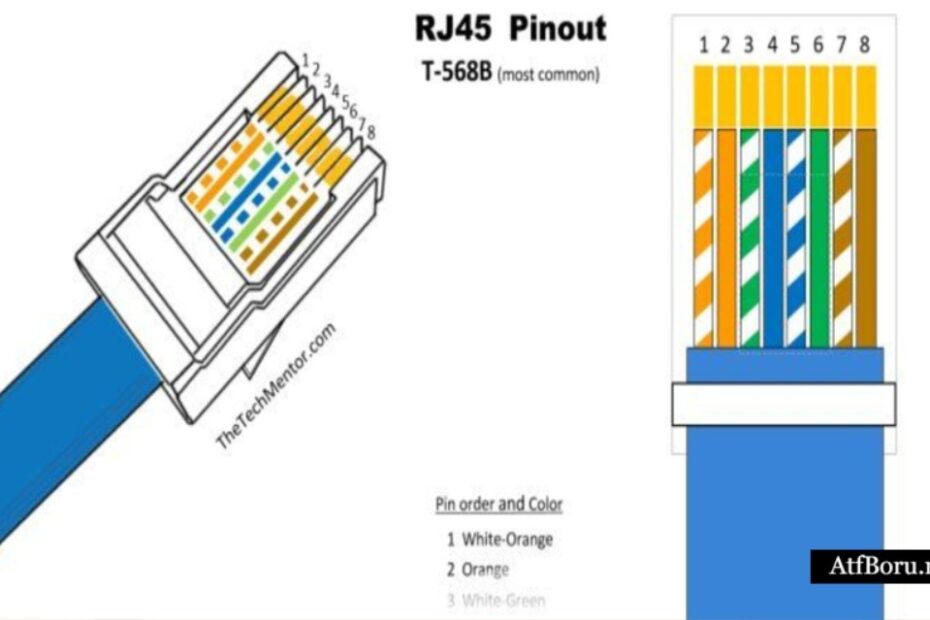Introduction
Understanding how to read an RJ45 pinout is essential for anyone working with Ethernet cables. Whether you’re setting up a home network, troubleshooting connectivity issues, or building your own cables, knowing the correct wiring standards ensures reliable connections. This guide will walk you through the basics of RJ45 pinout, including its structure, wiring standards, and practical applications.
What is an RJ45 Connector?

An RJ45 connector is an 8-position, 8-contact (8P8C) modular connector commonly used in Ethernet networking. It resembles a phone jack but is wider and designed to handle higher data transmission speeds.
The connector houses eight pins that correspond to the eight wires in an Ethernet cable, facilitating the transmission of data between devices.
Understanding RJ45 Pinout
The term “pinout” refers to the specific arrangement of wires within a connector. For RJ45 pinout, this means the order in which the eight wires are inserted into the connector.
The correct pinout ensures that the transmitting and receiving signals align correctly between devices.
Common RJ45 Wiring Standards
There are two primary wiring standards for RJ45 pinout: T568A and T568B. Both standards define the order of the wire pairs but differ in the arrangement of the colored wires.
T568A Standard
- Pin 1: White/Green
- Pin 2: Green
- Pin 3: White/Orange
- Pin 4: Blue
- Pin 5: White/Blue
- Pin 6: Orange
- Pin 7: White/Brown
- Pin 8: Brown
T568B Standard
- Pin 1: White/Orange
- Pin 2: Orange
- Pin 3: White/Green
- Pin 4: Blue
- Pin 5: White/Blue
- Pin 6: Green
- Pin 7: White/Brown
- Pin 8: Brown
The primary difference between T568A and T568B lies in the arrangement of the green and orange wire pairs. It’s important to note that both standards are functionally identical; the choice between them often depends on existing installations or personal preference.
Straight-Through vs. Crossover Cables
The configuration of the RJ45 pinout determines the type of Ethernet cable:
- Straight-Through Cable: Both ends of the cable use the same wiring standard (either T568A or T568B). This type of cable is typically used to connect different types of devices, such as a computer to a router or a switch.
- Crossover Cable: One end uses the T568A standard, and the other end uses the T568B standard. This configuration is used to connect similar devices directly, such as connecting two computers without a switch.
How to Wire an RJ45 Connector
Creating your own Ethernet cables can be a cost-effective solution for custom lengths. Here’s a step-by-step guide to wiring an RJ45 pinout:
- Prepare the Cable: Cut the Ethernet cable to the desired length and strip about 1 inch of the outer insulation from both ends.
- Untwist the Pairs: Separate the twisted wire pairs and straighten them out.
- Arrange the Wires: Align the wires according to the chosen wiring standard (T568A or T568B).
- Insert Wires into the Connector: Hold the RJ45 connector with the clip facing down and insert the wires into the connector, ensuring each wire reaches the end.
- Crimp the Connector: Use a crimping tool to secure the connector onto the cable, ensuring a firm connection between the wires and the pins.
- Test the Cable: Use a cable tester to verify that each wire is correctly connected and the cable functions properly.
Tips for Successful RJ45 Wiring

- Use Quality Tools: Invest in a good-quality crimping tool and cable stripper to ensure clean cuts and secure connections.
- Maintain Consistent Pairing: Keep the twisted pairs intact as much as possible to minimize interference.
- Check Compatibility: Ensure that the wiring standard used matches the devices you’re connecting.
- Test Before Use: Always test your cables with a cable tester before deploying them in your network.
Conclusion
Understanding and correctly implementing the RJ45 pinout is fundamental for building and maintaining Ethernet networks. By familiarizing yourself with the wiring standards and following proper procedures, you can ensure reliable and efficient network connections.
Whether you’re setting up a new network or troubleshooting existing cables, this knowledge empowers you to manage your network infrastructure effectively.
